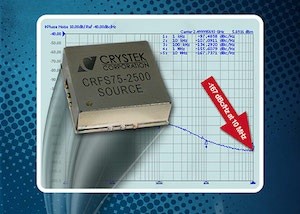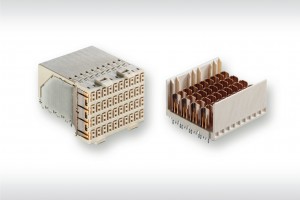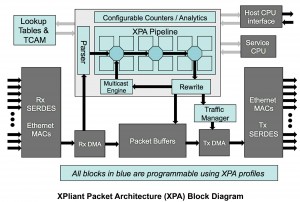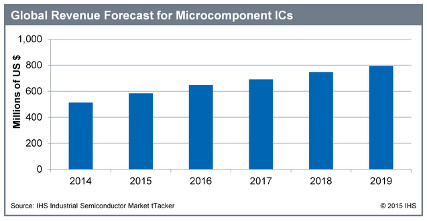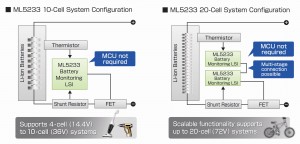
LAPIS is sampling a 10-cell lithium-ion battery monitoring LSI that provides a current consumption of 25μA
LAPIS Semiconductor, a part of ROHM, is sampling a 10-cell lithium-ion battery monitoring LSI that provides a current consumption of 25μA (typ.) making it suitable for battery protection systems in cordless vacuum cleaners, electric tools, and other portable equipment.
The ML5233 has 0.1μA (typ.) current consumption during power down, minimising the effects on battery capacity – even during long-term storage – and contributing to more eco-friendly products with virtually no loss of charged battery power.
In addition, built-in temperature and short-circuit current detection circuits enable detection of not only over-charge/discharge and overcurrent, but also abnormal (high) temperatures during discharge along with battery pack short-circuits – all without an MCU. This decreases footprint by 20% and reduces the number of external components from four to one, leading to smaller battery protection systems and lighter development load.
Overcharge detection accuracy (±15mV per each cell) increases charging efficiency by 7% over products with ±50mV accuracy.
High-voltage processes support 4-10 cells in series using a single LSI, ensuring compatibility with electric tools and other equipment in the 14V to 36V range.
Two LSIs can be combined to support up 20 cells in series and up to 72V.
The company writes:
The ML5233 is a protection IC for the 4- to 10-cell Li-ion rechargeable battery pack. It detects individual cell overvoltage/undervoltage and the pack overcurrent/over-temperature, and then automatically controls the ON/OFF state of the external charge/discharge NMOS-FETs accordingly. Also the ML5233 can be cascaded to handle battery packs with more than 10 cells.
See also: French firm wins Lapis Semi Bluetooth antenna design in

